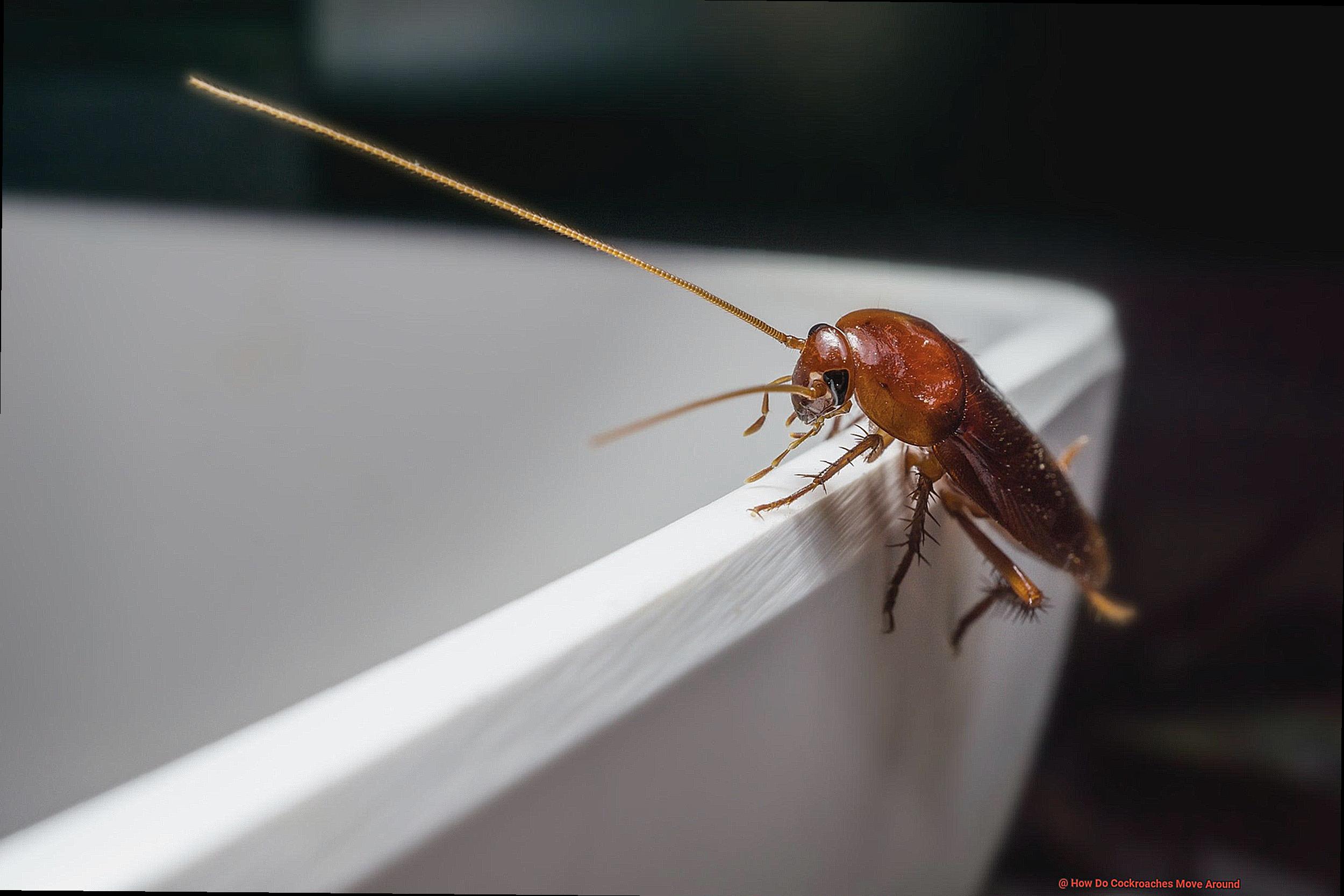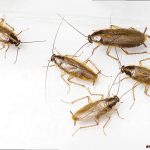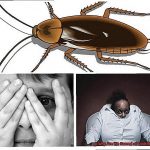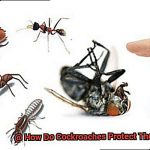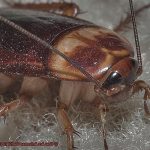We’ve all had that moment of horror when we turn on the lights and see a cockroach scurrying across the floor.
But have you ever stopped to wonder how these creepy crawlers are able to move around with such ease? It turns out that cockroaches have some pretty impressive abilities that allow them to navigate through all kinds of obstacles.
One of their key features is their adaptability. With their suction cup-like hairs, they can crawl, run, climb, and even swim if necessary.

And when it comes to squeezing through tight spaces, they can flatten their bodies like a pancake and slip through narrow gaps. But that’s just scratching the surface.
Cockroaches are lightning-fast and incredibly dexterous, making them adept at navigating complex terrain. They can detect changes in air currents and temperature to avoid obstacles, and are even capable of running upside down on smooth surfaces.
So if you’re curious about how these pests manage to move around so easily, buckle up for an exciting ride. In this blog post, we’ll delve into the fascinating world of cockroach movement, exploring their unique abilities and the tricks they use to survive in all sorts of environments.
By the end of this post, you’ll have a newfound appreciation for these resilient creatures – even if you still don’t want them in your home.
What are Cockroaches?
Contents
If you’ve ever had a run-in with a cockroach, you know they are not to be underestimated. These pesky insects belong to the order Blattodea and are one of the most common household pests worldwide.
With over 4,500 species, only a handful cause problems for homeowners, including the German, American, and Oriental cockroaches. Cockroaches are easily recognizable with their flattened body, six spindly legs, and two long antennae.
They come in shades of brown or black and measure around 1-2 inches in length. These tenacious insects are masters of survival and can go without food for up to a month.
But don’t let their seemingly harmless appearance fool you. Cockroaches can carry harmful bacteria such as Salmonella and E.coli, which can lead to illness in humans.
They can also trigger allergies and asthma in some individuals. Cockroaches are nocturnal creatures that hide during the day in cracks and crevices around your home.
At night, they come out in search of food and water, making your kitchen and bathroom prime targets. It’s important to take measures to keep them out of your home by sealing up any cracks or gaps, keeping food stored away in sealed containers, and maintaining a clean living space.
Crawling: The Most Common Way of Movement
These resilient creatures are able to survive in almost any environment, and one of the reasons for this is because of their impressive crawling abilities.
Crawling is the most common way that cockroaches get around. With six legs, each equipped with tiny hairs that help them grip onto surfaces, they can navigate all sorts of terrain – from smooth surfaces to rough ones, and even vertical ones.
And with a flexible exoskeleton, they can squeeze through tight spaces with ease, making them notorious for invading homes and businesses. But their crawling abilities are not just about getting from point A to point B. Cockroaches prefer to move along the edges of walls or other surfaces instead of out in the open.
This behavior helps them feel safer and avoid predators. In fact, they are known for their ability to flatten their bodies and fit through spaces that are much smaller than their actual size.
Overall, crawling is what makes cockroaches such adaptable and successful creatures. They can thrive in a variety of environments by utilizing their impressive movement abilities.
Running: Quick Escape from Danger
When danger looms, they can move with lightning speed and agility, leaving predators and other threats in their wake. Their long and slender legs, coupled with their flexible exoskeleton, make them natural born runners, with some species clocking in at an impressive 3 miles per hour.
But it’s not just their body structure that makes them such skilled runners. Cockroaches also possess small sensory hairs on their legs that allow them to detect obstacles and navigate through tight spaces with ease.
And their unique “fast-slow” running technique, where they alternate between quick bursts of speed and slower movements, enables them to cover a lot of ground while conserving energy. Perhaps the most remarkable thing about cockroaches’ running abilities, however, is their ability to run upside down on smooth surfaces.
This is thanks to the tiny hairs on their feet that create a suction-like effect, allowing them to grip onto surfaces and scuttle around effortlessly. It’s no wonder that cockroaches have survived for millions of years and can be found in virtually every corner of the planet.
But while we may admire their running skills from afar, it’s important to remember that they can pose health risks and become a nuisance if they invade our homes or businesses.
Flying: Short Distances or Flight for Short Periods of Time
Although flying is not their primary mode of transportation, it is an essential part of their movement repertoire.
Let’s delve into how cockroaches use their wings for these short flights and glides. Cockroaches have wings that are folded flat against their backs and protected by a hard shell called the tegmina.
These wings are thin and membranous, allowing them to fly for up to a few meters at a time. However, before they take off and fly, they require a running start, so they usually use their wings to glide short distances.
During flight, cockroaches use their antennae to sense their surroundings and orient themselves in space. Their wings also enable them to make quick turns and changes in direction, which is useful when avoiding predators or navigating through tight spaces.
Why do cockroaches fly? They use their wings to escape predators, navigate through difficult terrain, and find food sources.
Flying can also help them avoid obstacles or hazards on the ground. While cockroaches may seem like pesky pests that invade our homes or businesses, understanding how they fly can help us better prevent infestations.
By sealing up any cracks or openings in our homes or businesses, we can prevent these agile insects from accessing our living spaces. In conclusion, flying may not be the primary mode of transportation for cockroaches, but it is a vital part of their movement repertoire.
Adaptability to Different Environments

Cockroaches are the ultimate survivors, thriving in environments where other creatures would perish.
Their resilience is due to their incredible physiological and behavioral adaptations that make them one of the most adaptable pests in the world. Physiologically, cockroaches have a hard exoskeleton that acts as armor against predators, harsh weather conditions, and pesticides.
Their exoskeleton is also water-resistant, allowing them to thrive in damp environments. Additionally, their unique respiratory system enables them to breathe through small tubes called spiracles, which helps them survive in low-oxygen environments.
But it’s not just their physical attributes that make them so adaptable. Cockroaches are agile and speedy creatures.
With a top speed of three miles per hour, they can outrun many predators. They can also climb vertical surfaces using the sticky pads on their feet, which enables them to escape from danger or find new hiding spots.
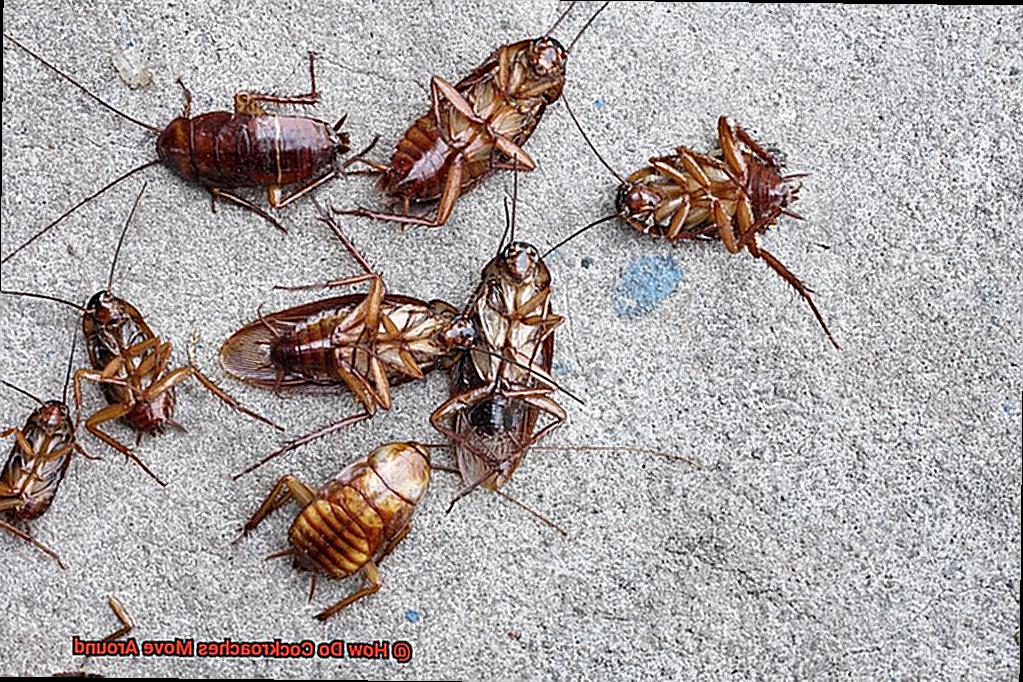
Their intelligence is another remarkable adaptation. Cockroaches have an exceptional ability to learn and remember the layout of their environment.
This skill helps them find food sources and avoid hazards such as pesticides or traps. They recognize familiar landmarks and navigate through complex mazes with ease.
Understanding these adaptations is essential for developing effective pest control strategies that target their weaknesses while minimizing harm to humans and the environment. For example, reducing moisture levels by sealing cracks and crevices can make it harder for cockroaches to survive.
Using baits that mimic their natural food sources can be more effective than traditional insecticides. In conclusion, cockroaches’ adaptability to different environments is a result of their unique physiological and behavioral characteristics.
These creatures possess an array of skills such as hard exoskeletons, water-resistance, agility, speed, climbing ability, and memory skills that enable them to survive in a wide range of conditions.
Preventing Cockroach Infestations
Cockroaches are notorious for thriving in dirty and messy environments, so keeping your house tidy and free of clutter is crucial to keep them at bay.
To eliminate the possibility of cockroach infestations, start by regularly vacuuming carpets and furniture, sweeping floors, and wiping countertops. This will help eliminate any food crumbs or spills that may attract these troublesome pests.
Remember, a clean home is a cockroach-free home. Sealing any gaps or cracks in your walls, floors, and doors is also crucial to prevent cockroach infestations.
These pests can effortlessly crawl through small gaps or cracks, so it’s crucial to seal these areas with caulking or weather stripping. Proper food storage is also essential in preventing cockroach infestations.
Ensure that all food is stored in airtight containers and kept in the refrigerator or pantry. Avoid leaving food out on countertops or in open containers where cockroaches can quickly access it.
If you suspect that you have a cockroach infestation, don’t hesitate to contact a pest control professional. They can help identify the severity of the infestation and provide effective treatment options to eliminate the problem.
bnPWU-mqGL8″ >
Also Read: Can Cockroaches Jump? – All About Roaches
Conclusion
In summary, cockroaches are truly remarkable creatures that possess incredible abilities to maneuver through various obstacles.
They are highly adaptable and can crawl, run, climb, and even swim when necessary. With lightning-fast speed and impressive dexterity, they can easily navigate complex terrain and detect changes in air currents and temperature to avoid obstacles.
In fact, they can even run upside down on smooth surfaces. While these pests may seem like unwelcome intruders in our homes or businesses, understanding their unique movement abilities and adaptations can help us prevent infestations.
By sealing any cracks or openings in our homes or businesses, we can keep them from accessing our living spaces. Additionally, maintaining a clean home is essential in preventing cockroach infestations.
By following these simple preventative measures, you can significantly reduce the risk of cockroach infestations in your home while safeguarding the health of yourself and your loved ones.

